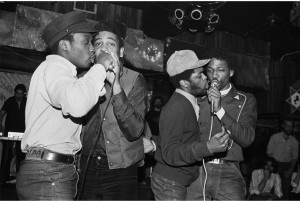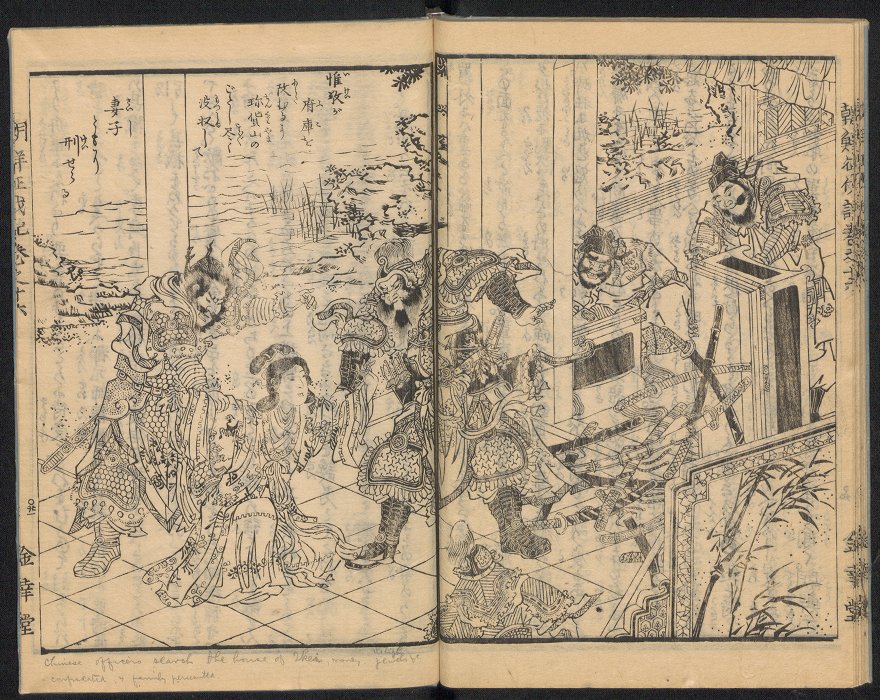A Picture is Worth a Thousand Words: Arts and Sciences Visual Resources Program
Visual resources are critical in enabling and enhancing learning and teaching in the humanities and arts. During the last two decades, we have witnessed the digital shift in several ways, including the replacement of slide collections with personal digital image collections and an increased reliance on shared online visual resources such as ARTstor.
And although online collections such as ARTstor make a broad range of digital images accessible, no comprehensive collections currently exist in any subject area. Digital visual resources are weak especially in non-Western and non-traditional cultures such as Native American Indian, Islamic, or African American studies. Creating visual resources to support a rich and diverse domain of scholarly explorations continues to be the joint responsibility of cultural institutions and research libraries.
So, how can the Library help?
Since 2010, we’ve collaborated with the College of Arts and Sciences in a digitization program to respond to the challenges inherent in the move from analog to digital delivery of image resources. Our digitization program also helps foster the integration of new media into teaching to enhance learning and creative expression and supports the creation, management, sharing, and archiving of high-quality images, bearing in mind the importance of both pedagogical and sustainability issues.
The most recent round of grants includes several fascinating projects, including:
- photographing and digitizing a slide collection of Indian Raga Mala paintings;
- digitizing and archiving a collection of fragile videotapes that are essential for teaching the history and theory of digital art;
- creating a digital repository of the A.D. White Collection of over 2,000 plaster casts and impressions of engraved gems and amulets from Classical antiquity; and
- collection of important and fragile squeezes (paper impressions) that were created in Ankara (Turkey) during the Cornell Expedition to the Assyro-Babylonian Orient in 1907.
A key component of the collaboration is the Grants Program for Digital Collections in Arts and Sciences, which aims to support collaborative and creative use of resources through the creation of digital content of enduring value to the Cornell community and scholarship at large.
The Arts and Sciences Visual Resources Advisory Group, which is composed of faculty members and representatives from the Library, oversees and continues to refine the service model, including the coordination of the grants program. In addition to the grants program, the initiative also supports the digitization of visual content used in courses to develop a sharable and sustainable curriculum library to support the College’s teaching mission.
And a few of our most successful grants from the past:
Hip Hop Collection/Conzo Archive
Steve Pond, Music and Travis Gosa, Africana
Collaborator: Katherine Reagan, Cornell University Library
Founded in 2007, Cornell’s hip hop collection is now the largest archive on early hip hop culture in the United States. A key foundational element of the collection is an assemblage of photographic prints by Bronx photographer Joe Conzo, Jr., taken between 1977 and 1984. Conzo is one of the few photographers known to have captured the early years of hip hop on film. Online access to the collection is of interest to multiple disciplines, including art, art history, dance, music, American Studies, Africana and offers a rich array of learning and teaching materials for a new Cornell course on hip hop.
Warburg’s “Atlas” Panels
Peter Uwe Hohendahl, German Studies, Comparative Literature
Collaborators: Kizer Walker, Cornell University Library; Peter J. Potter, Cornell University Press; Christopher D. Johnson, Comparative Literature, Harvard University
The goal of the project is to build an interactive resource for the exploration of the fragmentary “atlas of images” left by German Jewish art historian Aby M. Warburg (1866-1929). The Atlas involves the assemblage of hundreds of images juxtaposed on wood panels. An interactive, web-based treatment of the Atlas will realize Warburg’s ideal, namely, that each viewer makes his or her own connections between the myriad images presented in the Atlas. This website serves as a multimedia companion to “Signale: Modern German Letters, Cultures, and Thought” and will support exploration of new technologies and new partnerships in creating economically viable channels for disseminating scholarship.
Japanese Woodblocks from the William Elliot Griffis Collection
Katsuya Hirano, History/Asian Studies
Collaborator: Daniel McKee, Cornell University Library
These 17th century Japanese woodblock printed books represent Japan’s initial attempts to understand the west and modernize itself. They are therefore of great importance in understanding the formation of modern Japan. These books, many of which are rare or even unique in US collections, have great appeal to historians, art historians, and scholars of cultural politics.
Kluge Online
David Bathrick, German Studies/Theater
Collaborators: Dr. Rainer Stollmann, University of Bremen (Germany); University of Bremen Library; Dr. Michael Jennings, Princeton University
We significantly expanded the existing Muller-Kluge online collection, which is one of the most visited collections hosted by the Library. The website consists of interviews between West German filmmaker Alexander Kluge and the East German playwright Heiner Muller. The new site will will incorporate Kluge interviews with Hans Magnus Enzenberger and Oskar Negt. This initiative also involves a partnership and will enable Cornell to have access to Princeton’s Kluge Research Collection.
Cornell Gem and Amulet Collection
Caitlín Barrett and Verity Platt, Classics/Art History
The project involves the creation of a digital repository of the A.D. White Collection of over 2000 plaster casts and impressions of engraved gems and amulets from Classical antiquity. These casts have been used for teaching more than a dozen lecture courses and seminars. Digitization of Cornell’s gem collection is a natural continuation of projects spearheaded by Professor Alexandridis and Danielle Mericle, who have been digitizing and cataloging the university’s casts of ancient sculptures and its collection of Greco- Roman coins (funded by Arts & Sciences Grants). Digitization of the collection will make it much easier to assign research projects on the material to students, creating a fantastic classroom resource to use alongside the objects themselves.For more information about the grant program, please visit the DCAPS website.


